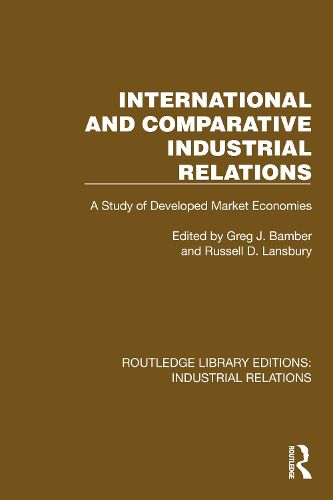Readings Newsletter
Become a Readings Member to make your shopping experience even easier.
Sign in or sign up for free!
You’re not far away from qualifying for FREE standard shipping within Australia
You’ve qualified for FREE standard shipping within Australia
The cart is loading…






International and Comparative Industrial Relations (1987) analyses the factors which have shaped industrial relations in a range of different countries, including the characteristics of the major groups and parties concerned, and the nature and types of bargaining relationships which have evolved. A substantial comparative chapter examines trends within market economies as a whole, and a statistical appendix provides some valuable comparative labour market data. Each chapter follows a similar format, with an examination of the environment of industrial relations - economic, legal, social and political - and the major players - unions, employers and governments. Then follow descriptions of the main processes of industrial relations, such as local and centralised collective bargaining, arbitration and mediation, joint consultation and employee participation. Important topics are picked out, such as labour law reform, industrial democracy, technological change and incomes policy.
$9.00 standard shipping within Australia
FREE standard shipping within Australia for orders over $100.00
Express & International shipping calculated at checkout
International and Comparative Industrial Relations (1987) analyses the factors which have shaped industrial relations in a range of different countries, including the characteristics of the major groups and parties concerned, and the nature and types of bargaining relationships which have evolved. A substantial comparative chapter examines trends within market economies as a whole, and a statistical appendix provides some valuable comparative labour market data. Each chapter follows a similar format, with an examination of the environment of industrial relations - economic, legal, social and political - and the major players - unions, employers and governments. Then follow descriptions of the main processes of industrial relations, such as local and centralised collective bargaining, arbitration and mediation, joint consultation and employee participation. Important topics are picked out, such as labour law reform, industrial democracy, technological change and incomes policy.